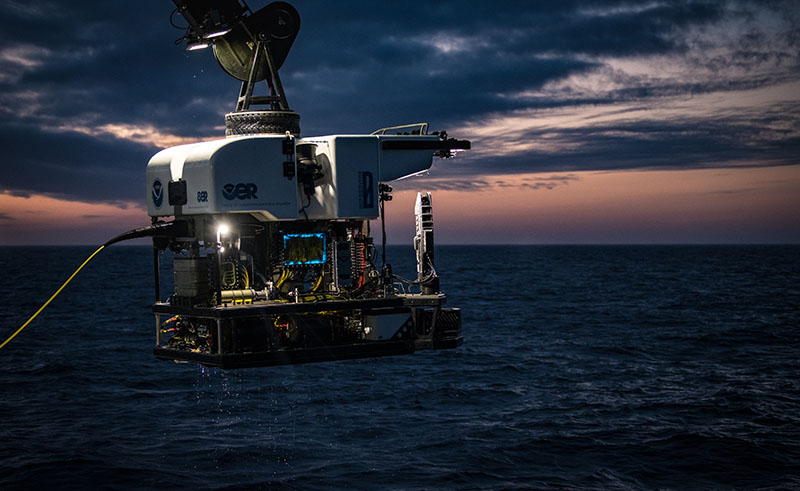Federal Government Releases New Strategies to Advance Ocean Exploration
June 11, 2020

The NOAA Office of Ocean Exploration and Research's remotely operated vehicle, Deep Discoverer, is recovered after a dive on August 29, 2019, to explore the Gully Marine Protected Area off of Nova Scotia, Canada. Image courtesy of the NOAA Office of Ocean Exploration and Research, Deep Connections 2019. Download larger version (1 MB).
The federal government recently announced the release of strategies and recommendations to fully map, explore, and characterize the U.S. Exclusive Economic Zone (EEZ). With more than 13,000 miles of coastline and 3.4 million square nautical miles of ocean, the U.S. EEZ is larger than the land area of all 50 states combined, and one of the largest in the world – yet only a fraction of this area has been explored.
Included in the release are a National strategy to map, explore, and characterize the EEZ of the United States; a strategy to map the Alaskan coastline; and recommendations to streamline permitting for ocean exploration and research.
Dr. Alan P. Leonardi, Director of the NOAA Office of Ocean Exploration and Research, and RDML Shepard Smith, Director of the NOAA Office of Coast Survey, co-chaired the Task Force responsible for drafting the National Strategy for Mapping, Exploring, and Characterizing the U.S. Exclusive Economic Zone. Developed with ocean agencies from across the federal government under the auspices of the Ocean Policy Committee, goals of this Strategy include:
- Coordination of interagency efforts and resources to map, explore, and characterize the U.S. EEZ;
- Completion of mapping deep waters in the U.S. EEZ by 2030 and nearshore waters by 2040;
- Exploration and characterization of priority areas of the U.S. EEZ;
- Development of new and emerging science and technologies; and
- Establishment of public and private partnerships to advance ocean exploration.
An immediate action under the Strategy will be the development of an Implementation Plan that will identify and direct specific actions needed to implement the Strategy.
As the only federal program dedicated to exploring our deep ocean, the NOAA Office of Ocean Exploration and Research (OER) already plays a key role in this work. By filling gaps in the basic understanding of U.S. deep waters and seafloor and providing critical deep-ocean data, information, and awareness, OER is helping to promote economic growth, marine environmental protection, human health, and national security.